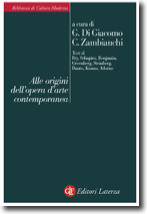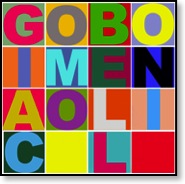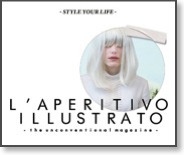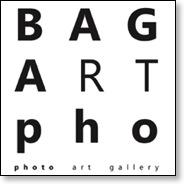Testo pubblicato su:  _________________________________________________________________
_________________________________________________________________
Clement Greenberg: “Modernist Painting”, 1961
di Giacomo Belloni
Nel suo saggio del 1961 Modernist Painting Greenberg chiarisce cosa lui intenda con il termine Modernismo. Esordisce specificando che questo comprende non solamente l'arte e la letteratura ma tutto ciò c'è di vivo nella cultura contemporanea. Modernismo è quindi sinonimo di avanguardia e, visto che lo identifica con l'autocritica, ne attribuisce la paternità a Kant, primo vero modernista, primo filosofo che ha messo in discussione i metodi stessi della critica. L'origine dell'avanguardia è proprio nel senso critico dell'Illuminismo anche se quest'ultimo, al contrario del Modernismo, non muove le sue ragioni dall'interno, ma dall'esterno.
Realistic, naturalistic art had dissembled the medium, using art to conceal art; Modernism used art to call attention to art. The limitations that constitute the medium of painting—the flat surface, the shape of the support, the properties of the pigment—were treated by the old masters as negative factors that could be acknowledged only by implicitly or indirectly. L'arte realistica e naturalistica nasconde il medium, un'arte che volutamente cela l'arte; il Modernismo invece usa l'arte per richiamare l'attenzione sull'arte. Il medium ed i suoi limiti – la piattezza della superficie, la forma del supporto, le proprietà dei pigmenti, sono tutti fattori limitanti ed vanno dissimulati. Manet è stato il primo ad evidenziare senza remore la superficie bidimensionale della tela e, con lui gli Impressionisti hanno fondato la loro arte nell'evidenziare, senza nasconderle, le caratteristiche dei colori, perché non ci fosse alcun dubbio che questi siano pigmenti che provengono dai tubetti.
Più di altro è stata comunque la piattezza della tela ad essere considerata una qualità esclusiva della pittura; ecco perché i modernisti si sono rivolti quasi esclusivamente ad essa e non hanno perso occasione per rimarcarla e per metterla in evidenza, escludendo qualsiasi tridimensionalità.
La forma circoscritta era sì una condizione limitante ma sempre condivisa con un'altra arte: il teatro; il colore era anch'esso condiviso con il teatro ma anche con la scultura.
I modernisti non abbandonarono mai completamente la rappresentazione delle forme riconoscibili, abbandonarono invece la spazialità tridimensionale in quanto è ciò che ospita gli oggetti del mondo. All recognizable entities (including pictures themselves) exist in three-dimensional space, per cui una siluette umana incompleta – o di una tazza da té - allontaneranno lo spazio pittorico anche dalla bidimensionalità letterale per una completa autonomia della pittura.
Per raggiungere la sua completa autonomia il Modernismo ha dovuto eliminare tutto ciò che la pittura condivideva con la scultura; solamente così è riuscita a trovare la sua espressività più importante attraverso l'astrazione. Portato avanti inizialmente in nome del colore, il lavoro di liberazione dalla tridimensionalità è durato quattro ben secoli.
David tentò di ridar vita alla pittura scultorea, ma lo fece in parte solo per salvare l'arte pittorica dall'appiattimento decorativo a cui sembrava portare l'enfasi del colore; con Manet e gli impressionisti terminò l'antagonismo tra colore e disegno e la contrapposizione diventò quella tra esperienza visiva pura ed esperienza ottica adattata alle associazioni tattili. Gli Impressionisti tentarono di indebolire tutto ciò che richiamava la scultura, a partire dal chiaroscuro e dal modellato. Successivamente Cézanne ed i cubisti rigettarono l'Impressionismo, così come aveva fatto David con chi lo aveva preceduto. Il risultato fu la pittura più piatta mai vista dai tempi di Giotto e Cimabue, così piatta da non essere in grado di contenere alcuna immagine riconoscibile.
Con la nascita del Modernismo, altre norme basilari tipiche del dipingere, subirono profonde revisioni, anche se non altrettanto spettacolari come quella descritta poc'anzi: la forma chiusa (pictureʼs enclosing shape), la cornice, le regole che definiscono la finitura dell'opera e la textura o, ancora, le norme che specificano il contrasto tra i colori.
Greenberg ricorda che le norme e le regole che caratterizzano una disciplina sono allo stesso tempi i suoi limiti; il Modernismo ha avuto il merito di capire che questi limiti possono essere portati indietro ancor prima che un quadro perda la sua connotazione in quanto pittura.
La piattezza verso cui i Modernismo tende non potrà comunque mai essere assoluta e, anche se la pittura proverà ad eliminare completamente il suo impulso scultoreo, trasparrà sempre un'illusione spaziale: the first mark made on a canvas destroys its literal and utter flatness; i segni tracciati da un artista come Mondrian creano comunque una tridimensionalità. Mentre prima l'illusione consisteva in un suggerimento di profondità, il pittore modernista non consentirà mai uno spazio dipinto “percorribile” e il quadro potrà solamente essere guardato attraverso l'occhio, ma mai “calpestato”.
Un'altra differenza è sui programmi: a differenza dei maestri del passato i pittori modernisti hanno obiettivi individuali così come quelli delle loro opere che sono e restano individuali.
Nothing could be further from the authentic art of our time than the idea of a rupture of continuity. Art is —among other things—continuity, and unthinkable without it. Lacking the past of art, and the need and compulsion to maintain its standards of excellence, Modernist art would lack both substance and justification.
Greenberg conclude il suo saggio scrivendo che nulla potrebbe essere più distante dall'autentica arte del suo tempo dell'idea di discontinuità con il passato. L'arte è - tra le altre cose – continuità, sarebbe impensabile fosse differente. Se ci fosse mai una cesura con il passato si perderebbero i valori d'eccellenza dell'arte ed il Modernismo non avrebbe né giustificazione d'esistenza né una sostanza.
io@giacomobelloni.com
_________________________________________________________________
per approfondimenti si consiglia la lettura del libro:

![]()
__________________________________________________________________
Clement Greenberg: “Modernist Painting”, 1961
Modernism includes more than art and literature. By now it covers almost the whole of what is truly alive in our culture. It happens, however, to be very much of a historical novelty. Western civilization is not the first civilization to turn around and question its own foundations, but it is the one that has gone furthest in doing so. I identify Modernism with the intensification, almost the exacerbation, of this self-critical tendency that began withthe philosopher Kant. Because he was the first to criticize the means itself of criticism, I conceive of Kant as, the first real Modernist.
The essence of Modernism lies, as I see it, in the use of characteristic methods of a discipline to criticise the discipline itself, not in order to subvert it but in order to entrench it more firmly in its area of competence. Kant used logic to establish the limits of logic, and while he withdrew much from its old jurisdiction, logic was left all the more secure in what there remained to it.
The self-criticism of Modernism grows out of, but is not the same thing as, the criticism of the Enlightenment. The Enlightenment criticized from the outside, the way criticism in its accepted sense does; Modernism criticizes from the inside, through the procedures themselves of that which is being criticized. It seems natural that this new kind of criticism should have appeared first in philosophy, which is critical by definition, but as the 19th century wore on, it entered many other fields. A more rational justification had begun to be demanded of every formal activity, and Kantian self-criticism, which had arisen in philosophy in answer to this demand in the first place, was called on eventually to meet and interpret it in areas that lay far from philosophy.
We know what has happened to an activity like religion, which could not avail itself of Kantian, immanent, criticism in order to justify itself. At first glance the arts might seem to have been in a situation like religionʼs. Having been denied by the Enlightenment all tasks they could take seriously, they looked as though they were going to be assimilated to entertainment pure and simple, and entertainment itself looked as though it were going to be assimilated, like religion, to therapy. The arts could save themselves from this leveling down only by demonstrating that the kind of experience they provided was valuable in its own right and not to be obtained from any other kind of activity.
Each art, it turned out, had to perform this demonstration on its own account. What had to be exhibited was not only that which was unique and irreducible in art in general, but also that which was unique and irreducible in each particular art. Each art had to determine, through its own operations and works, the effects exclusive to itself. By doing so it would, to be sure, narrow its area of competence, but at the same time it would make its possession of that area all the more certain.
It quickly emerged that the unique and proper idea of competence of each art coincided with all that was unique in the nature of its medium. The task of self-criticism became to eliminate from the specific effects of each art any and every effect that might conceivably be borrowed from or by the medium of any other art. Thus would each art be rendered “pure,” and in its “purity” find the guarantee of its standard of quality as well as of its independence. “Purity” meant self-definition, and the enterprise of self-criticism in the arts becameone of self-definition with a vengeance.
Realistic, naturalistic art had dissembled the medium, using art to conceal art; Modernism used art to call attention to art. The limitations that constitute the medium of painting—the flat surface, the shape of the support, the properties of the pigment—were treated by the old masters as negative factors that could be acknowledged only by implicitly or indirectly. Under Modernism these same limitations came to be regarded as positive factors, and were acknowledged openly. Manetʼs became the first Modernist pictures by virtue of the frankness with which they declared the flat surfaces on which they were painted. The Impressionists, in Manetʼs wake, abjured underpainting and glazes, to leave the eye under no doubt as to the fact that the colors they used were made of paint that came from tubes or pots.
Cézanne sacrificed verisimilitude, or correctness, in order to fit his drawing and design more explicitly into the rectangular shape of the canvas. It was the stressing of the ineluctable flatness of the surface that remained, however, more fundamental than anything else to the processes by which pictorial art criticized and defined itself under Modernism. For flatness alone was unique and exclusive to pictorial art. The enclosing shape of the picture was a limiting condition, or norm, that was shared with the art of the theater; color was a norm and a means shared not only with the theater, but also with sculpture. Because flatness was the only condition painting shared with no other art, Modernist painting oriented itself to flatness as it did to nothing else.
The Old Masters had sensed that it was necessary to preserve what is called the integrity of the picture plane: that is, to signify the enduring presence of flatness underneath and above the most vivid illusion of three-dimensional space. The apparent contradiction involved was essential to the success of their art, as it is indeed to the success of all pictorial art. The Modernists have neither avoided nor resolved this contradiction; rather they have reversed its terms. One is made aware of the flatness of their pictures before, instead of after, being made aware of what the flatness contains. Whereas one tends to see what is in an Old Master before one sees the picture itself, one sees a Modernist picture as a picture first. This is, of course, the best way of seeing any kind of picture, Old Master or Modernist, but Modernism imposes it as the only and necessary way, and Modernismʼs success in doing so is a success of self-criticism. Modernist painting is in its latest phase and has not abandoned the representation of recognizable objects in principle. What it has abandoned in principle is the representation of the kind of space that recognizable objects can inhabit. Abstractness, or the non-figurative, has in itself still not proved to be an altogether necessary moment in the self-criticism of pictorial art, even though artists as eminent as Kandinsky and Mondrian have thought so. As such, representation, or illustration, does not attain the uniqueness of pictorial art; what does do so is the associations of things represented. All recognizable entities (including pictures themselves) exist in three-dimensional space, and the barest suggestion of a recognizable entity suffices to call up associations of that kind of space. The fragmentary silhouette of a human figure, or of a teacup, will do so, and by doing so alienate pictorial space from the literal two-dimensionality which is the guarantee of painting's independence as an art. For, as has already been said, three-dimensionality is the province of sculpture. To achieve autonomy, painting has had above all to divest itself of everything it might share with sculpture, and it is in its effort to do this, and not so much—I repeat—to exclude the representational or literary, that painting has made itself abstract.
At the same time, however, Modernist painting shows, precisely by its resistance to the sculptural, how firmly attached it remains to tradition beneath and beyond all appearances to the contrary. For the resistance to the sculptural dates far back before the advent of Modernism. Western painting, in so far as it is naturalistic, owes a great debt to sculpture, which taught it in the beginning how to shade and model for the illusion of relief, and even how to dispose that illusion in a complementary illusion of deep space. Yet some of the greatest feats of Western painting are due to the effort it has made over the last four centuries to rid itself of the sculptural. Starting in Venice in the 16th century and continuing in Spain, Belgium, and Holland in the 17th, that effort was carried on at first in the name of color. What David, in the 18th century, tried to revive sculptural painting, it was, in part, to save pictorial art from the decorative flattening-out that the emphasis on color seemed to induce. Yet the strength of Davidʼs own best pictures, which are predominantly his informal ones, lies as much in their color as in anything else. And Ingres, his faithful pupil, though he subordinated color far more consistently than did David, executed portraits that were among the flattest, least sculptural paintings done in the West by a sophisticated artist since the 14th century. Thus, by the middle of the 19th century, all ambitious tendencies in painting had converged amid their differences, in an anti-sculptural direction.
Modernism, as well as continuing this direction, has made it more conscious of itself. With Manet and the Impressionists the question stopped being defined as one of color versus drawing, and become one of purely optical experience against optical experience as revised or modified by tactile associations. It was in the name of the purely and literally optical, not in the name of color, that the Impressionists set themselves to undermining shading and modeling and everything else in painting that seemed to connote the sculptural. It was, once again, in the name of the sculptural, with its shading and modeling, that Cézanne, and the Cubists after him, reacted against Impressionism, as David had reacted against Fragonard. But once more, just as Davidʼs and Ingresʼ reaction had culminated, paradoxically, in a kind of painting even less sculptural than before, so the Cubist counter-revolution eventuated in a kind of painting flatter than anything else in Western art since before Giotto and Cimabue—so flat indeed that it could hardly contain recognizable images.
In the meantime the other cardinal norms of the art of painting had begun, with the onset of Modernism, to undergo a revision that was equally thorough if not as spectacular. It would take me more time than is at my disposal to show how the norm of the pictureʼs enclosing shape, or frame, was loosened, then tightened, then loosened once again, and isolated, and then tightened once more, by successive generations of Modernist painters. Or how the norms of finish and paint texture, and of value and color contrast, were revised and re-revised. New risk have been taken with all these norms, not only in the interests of expression but also in order to exhibit more clearly as norms. By being exhibited, they are tested for their indispensability. That testing is by no means finished, and the fact that it becomes deeper as it proceeds accounts for the radical simplifications that are also to be seen in the very latest abstract painting, as well as for the radical complications that are also seen in it.
Neither extreme is a matter of caprice or arbitrariness. On the contrary, the more closely the norms of a discipline become defined, the less freedom they are apt to permit in many directions. The essential norms or conventions of painting are at the same time the limiting conditions with which a picture must comply in order to be experienced as a picture. Modernism has found that these limits can be pushed back indefinitely before a picture stops being a picture and turns into an arbitrary object; but it has also found that the further back these limits are pushed the more explicitly they have to be observed and indicated. The crisscrossing black lines and colored rectangles of a Mondrian painting seem hardly enough to make a picture out of, yet they impose the pictureʼs framing shape as a regulating norm with a new force and completeness by echoing that shape so closely. Far from incurring the danger of arbitrariness, Mondrianʼs art proves, as time passes, almost too disciplined, almost too tradition- and convention- bound in certain respects; once we have gotten used to its utter abstractness, we realize that it is more conservative in its color, for instance, as well as in its subservience to the frame, than the later paintings of Monet.
It is understood, I hope, that in plotting out the rationale of Modernist painting I have had to simplify and exaggerate. The flatness towards which Modernist painting orients itself can never be an absolute flatness. The heightened sensitivity of the picture plane may no longer permit sculptural illusion, or trompe-l'oeil, but it does and must permit optical illusion. The first mark made on a canvas destroys its literal and utter flatness, and the result of the marks made on it by an artist like Mondrian is still a kind of illusion that suggests a kind of third dimension. Only now it is a strictly pictorial, strictly optical third dimension. The Old Masters created an illusion of space in depth that one could imagine oneself walking into, but the analogous illusion created by the Modernist painter can only be seen into; can be traveled through, literally or figuratively, only with the eye. The latest abstract painting tries to fulfill the Impressionist insistence on the optical as the only sense that a completely and quintessentially pictorial art can invoke. Realizing this, one begins to realize that the Impressionists, or at least the Neo-Impressionists, were not altogether misguided when they flirted with science. Kantian self- criticism, as it now turns out, has found its fullest expression in science rather than in philosophy, and when it began to be applied in art, the latter was brought closer in real spirit to scientific method than ever before—closer than it had been by Alberti, Uccello, Piero della Francesca, or Leonardo in the Renaissance. That visual art should confine itself exclusively to what is given in visual experience, and make no reference to anything given in any other order of experience, is a notion whose only justification lies in scientific consistency.
Scientific method alone asks, or might ask, that a situation be resolved in exactly the same terms as that in which it is presented. But this kind of consistency promises nothing in the way of aesthetic quality, and the fact that the best art of the last seventy or eighty years approaches closer and closer to such consistency does not show the contrary. From the point of view of art in itself, its convergence with science happens to be a mere accident, and neither art nor science really gives or assures the other of anything more than it ever did. What their convergence does show, however, is the profound degree to which Modernist art belongs to the same specific cultural tendency as modern science, and this is of the highest significance as a historical fact.
It should be understood that self-criticism in Modernist art has never been carried on in any but a spontaneous and largely subliminal way. As I have already indicated, it has been altogether a question of practice, immanent to practice, and never a topic of theory. Much is heard about programs in connection with Modernist art, but there has actually been far less of the programmatic in Modernist than in Renaissance or Academic painting. With a few exceptions like Mondrian, the masters of Modernism have no more fixed ideas about art than Corot did. Certain inclinations, certain affirmations and emphases, and certain refusals and abstinences as well, seem to become necessary simply because the way to stronger, more expressive art lies through them. The immediate aims of the Modernists were, and remain, personal before anything else, and the truth and success of their works remain personal before anything else. And it has taken the accumulation, over decades, of a good deal of personal painting to reveal the general self-critical tendency of Modernist painting. No artist was, or yet is, aware of it, nor could any artist ever work freely in awareness of it. Tthis extent—and it is a great extent—art gets carried on under Modernism much in the same way as before.
And I cannot insist enough that Modernism has never meant, and does not mean now, anything like a break with the past. It may mean a devolution, an unraveling, of tradition, but it also means its further evolution. Modernist art continues the past without gap or break, and wherever it may end up it will never cease being intelligible in terms of the past. The making of pictures has been controlled, since it first began, by all the norms I have mentioned. The Paleolithic painter or engraver could disregard the norm of the frame and treat the surface in a literally sculptural way only because he made images rather than pictures, and worked on a support—a rock wall, a bone, a horn, or a stone—whose limits and surface were arbitrarily given by nature. But the making of pictures means, among other things, the deliberate creating or choosing of a flat surface, and the deliberate circumscribing and limiting of it. This deliberateness is precisely what Modernist painting harps on: the fact, that is, that the limiting conditions of art are altogether human conditions.
But I want to repeat that Modernist art does not offer theoretical demonstrations. It can be said, rather, that it happens to convert theoretical possibilities into empirical ones, in doing which it tests many theories about art for their relevance to the actual practice and actual experience of art. In this respect alone can Modernism be considered subversive. Certain factors we used to think essential to the making and experiencing of art are shown not to be so by the fact that Modernist painting has been able to dispense with them and yet continue to offer the experience of art in all its essentials. The further fact that this demonstration has left most of our old value judgments intact only makes it the more conclusive. Modernism may have had something to do with the revival of the reputations of Uccello, Piero della Francesca, confirmed, if it did not start, the revival of Giottoʼs reputation; but it has not lowered thereby the standing of Leonardo, Raphael, Titian, Rubens, Rembrandt, or Watteau. What Modernism has shown is that, though the past did appreciate these masters justly, it often gave wrong or irrelevant reasons for doing so. In some ways this situation is hardly changed today. Art criticism and art history lag behind Modernism as they lagged behind pre-Modernist art. Most of the things that get written about Modernist art still belong to journalism rather than to criticism or art history. It belongs to journalism—and to the millennial complex from which so many journalists and journalist intellectuals suffer in our day—that each new phase of Modernist art should be hailed as the start of a whole new epoch in art, marking a decisive break with all the customs and conventions of the past. Each time, a kind of art is expected so unlike all previous kinds of art, and so free from norms of practice or taste, that everybody, regardless of how informed or uninformed he happens to be, can have his say about it. And each time, this expectation has been disappointed, as the phase of Modernist art in question finally takes its place in the intelligible continuity of taste and tradition.
Nothing could be further from the authentic art of our time than the idea of a rupture of continuity. Art is—among other things—continuity, and unthinkable without it. Lacking the
past of art, and the need and compulsion to maintain its standards of excellence, Modernist art would lack both substance and justification.
Postscript (1978)
The above appeared first in 1960 as a pamphlet in a series published by the Voice of America. It had been broadcast over that agency's radio in the spring of the same year. With some minor verbal changes it was reprinted in the spring 1965 number of Art and Literature in Paris, and then in Gregory Battcock's anthology The New Art (1966).
I want to take this chance to correct an error, one of interpretation an not of fact. Many readers, though by no means all, seem to have taken the 'rationale' of Modernist art outlined here as representing a position adopted by the writer himself that is, that what he describes he also advocates. This may be a fault of the writing or the rhetoric.
Nevertheless, a close reading of what he writes will find nothing at all to indicate that he subscribes to, believes in, the things that he adumbrates. (The quotation marks around pure and purity should have been enough to show that.) The writer is trying to account in part for how most of the very best art of the last hundred-odd years came about, but he's not implying that that's how it had to come about, much less that that's how the best art still has to come about. 'Pure' art was a useful illusion, but this doesn't make it any the less an illusion. Nor does the possibility of its continuing usefulness make it any the less an illusion.
There have been some further constructions of what I wrote that go over into preposterousness: That I regard flatness and the inclosing of flatness not just as the limiting conditions of pictorial art, but as criteria of aesthetic quality in pictorial art; that the further a work advances the self-definition of an art, the better that work is bound to be. The philosopher or art historian who can envision me—or anyone at all—arriving at aesthetic judgments in this way reads shockingly more into himself or herself than into my article.
_______________________________________________________________________________________
NOTA BENE: ARCHIVIOARTE non ha alcun fine di lucro. Ogni proposta qui contenuta ha la sola finalità di promuovere la diffusione dell'arte in quanto considerata patrimonio di tutti e per tutti. Ogni iniziativa, ogni azione ed ogni pubblicazione è autoprodotta e diffusa unicamente per amor di cultura e per il convincimento che la sua condivisione ci possa rendere più ricchi spiritualmente e più liberi.
Nulla di quanto qui pubblicato ha contenuti politici.
_______________________________________________________________________________________
"È vero, principe, che una volta avete detto che il mondo sarà salvato dalla bellezza?" Dostoevski, L'Idiota
_______________________________________________________________________________________













